The Data
Popular Music, the Hot 100, and Spotify's Web API
Popular music has always been a reflection of the culture that promotes it, and the United States is no exception. From the Beatles to Taylor Swift, society has been on a musical journey. But, how can this be measured? The Billboard Hot 100 chart publishes the top tracks in the United States (based on record sales, streams, and radio play) weekly, and has done so since 1958 (Billboard Staff 2018). While not all-encompassing of popular culture, the top tracks in the nation certainly have a basis for describing its values.
Spotify's Web API provides a great tool to analyze these tracks, generating data regarding certain audio features in the tracks such as "valence" (mood), "danceability", "acousticness", and many more. With this resource (combined with lyrical analysis), there is certainly a wealth of data about popular music. From the year 2000 and onward, there has been a prominent shift in what popular music sounds like, who it's made by, and what values it promotes.
We just can't let go of some things...
Time Signature
The time signature of a song describes the feel or pulse of the beat, and it turns out one is easily the most popular. For decades, 80% or more of the songs on the Hot 100 have featured a 4/4 time signature, also known as "common time". Common time gets 4 beats to a measure. As its alias suggests, common time is the most used time signature, even outside of music that hits the Hot 100.
Tempo
The tempo of a song describes how fast the song is. While there are some nuances to tempo (such as songs that get 3 beats to a slower pulse so they feel 3 times as fast as their tempo states), Hot 100 hits' tempos can generally be taken at face value. For a long time, popular tracks have tended to average from about 110 to 140 beats per minute, which is fairly upbeat.
Lyrics
... but we're really starting to step out of our comfort zone.
Love is as popular as ever, but it's got more dimensions represented in today's music.
Despite love dominating the music industry to this day, the ways in which we sing about love are changing. Shane Snow (2015) Describes this phenomenon as a shift "from simply sappy to a mix of upbeat and dark-- partying, lusting, loving, living, and losing" (para. 12). American popular culture is becoming more accepting of expressing more emotions in music, particularly negative ones. There is a greater freedom of expression in recent music, generating more opportunities for creativity. But, love is just one example of a greater variety of moods; popular music is seeing an expansion of expression across all kinds of topics and audio features.
Explore Perspectives on Love
Our Changing Moods
Key
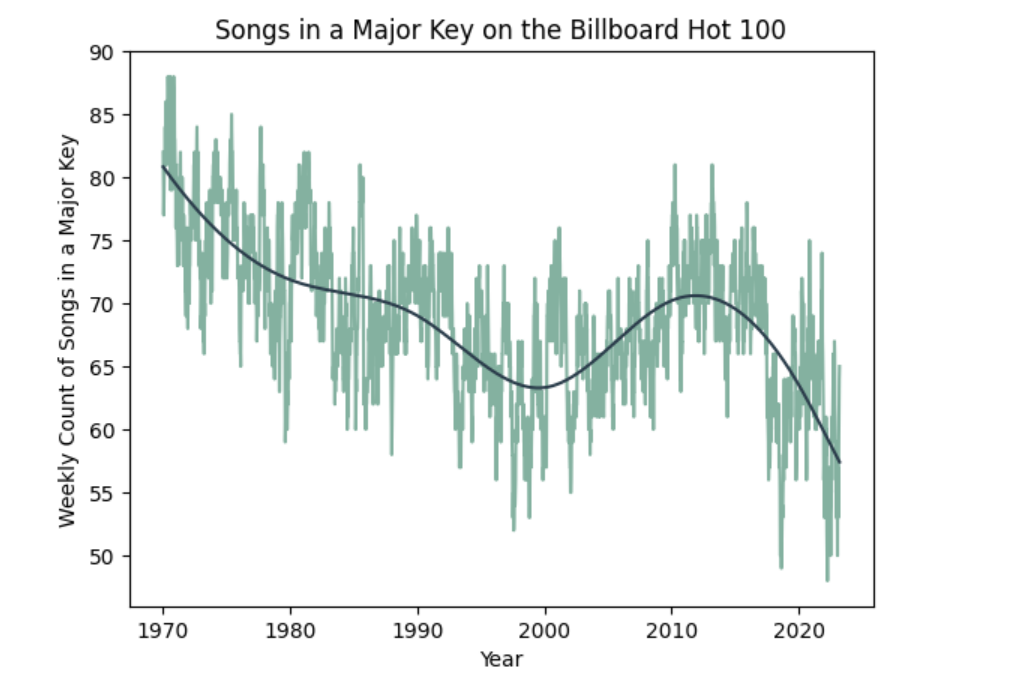
Speechiness
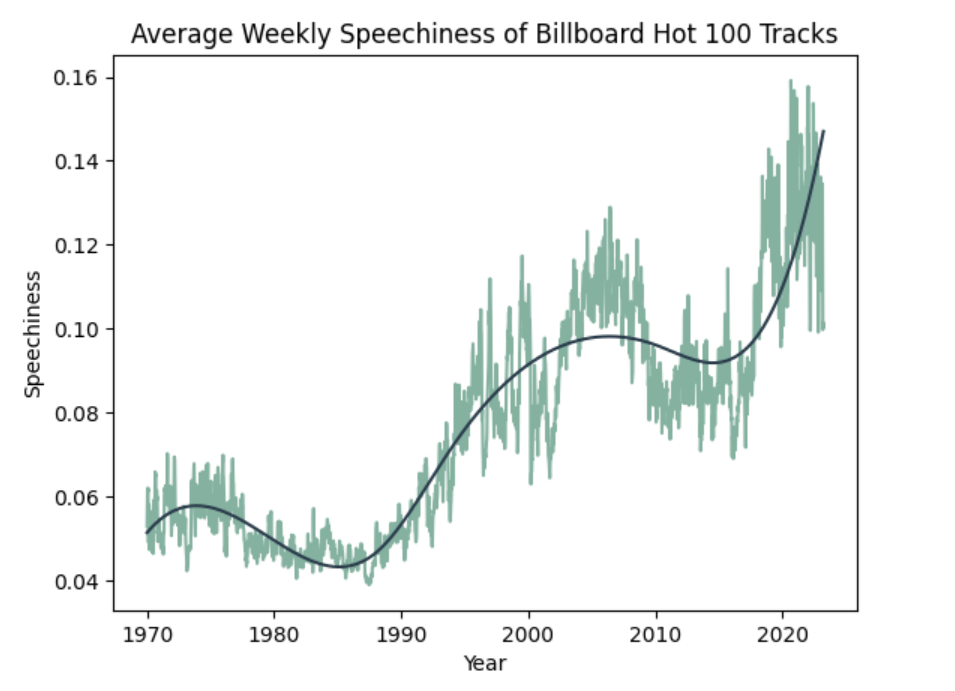
Explicit Content
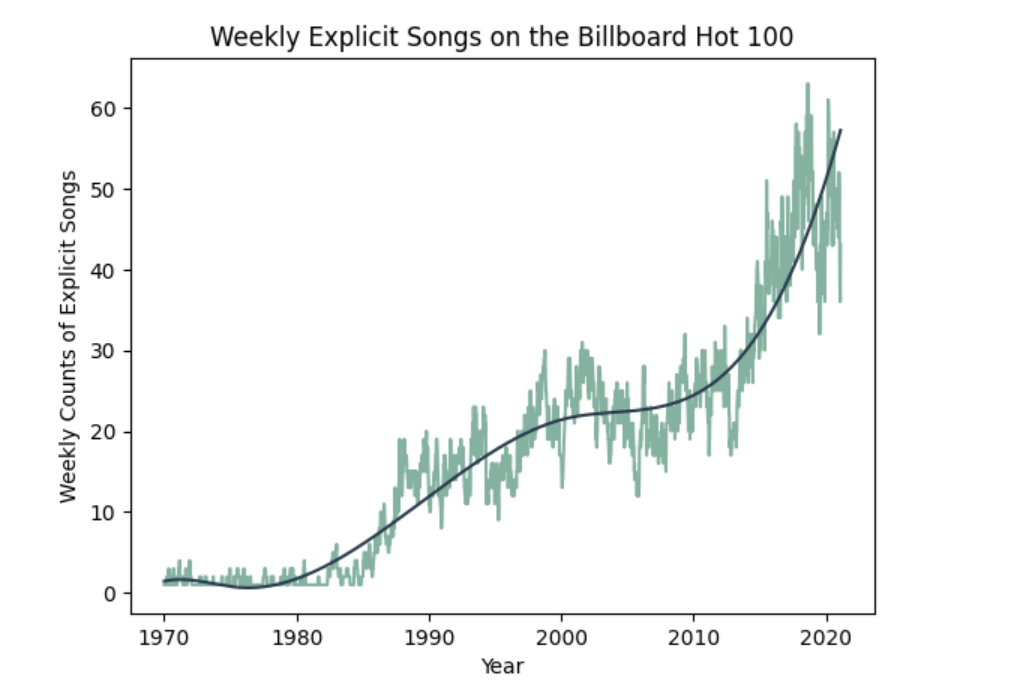
Valence
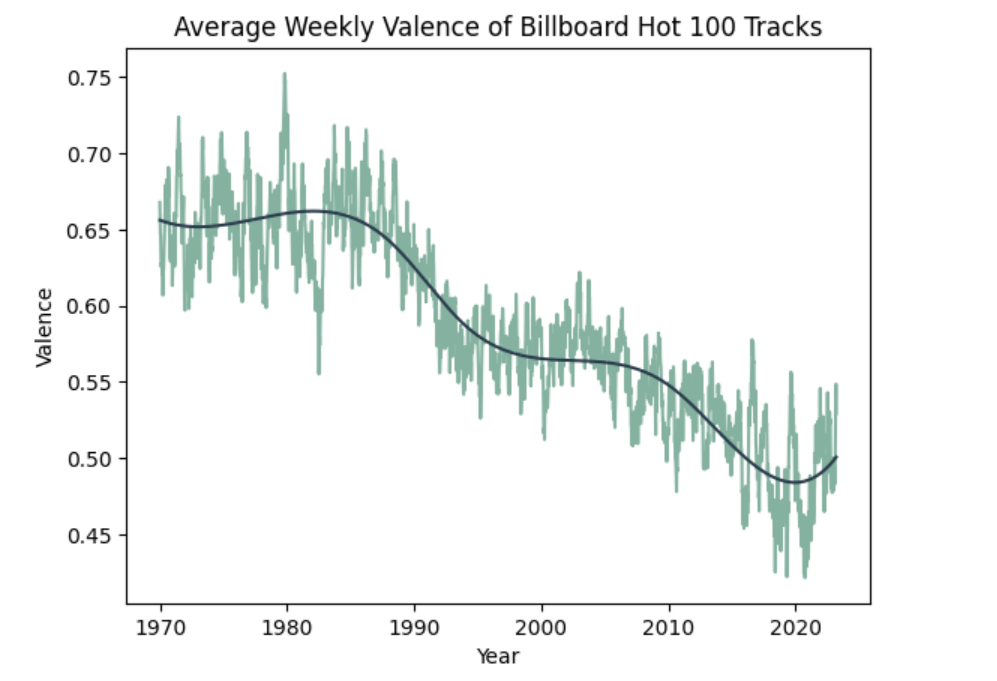
Diversity and Collaboration
Take a look at the artist makeup from a 30-track random sample in each decade of the dataset:
Race
Throughout the United States' history, People of Color, and particularly Black Americans, created many genres of music. Jazz, Rhythm and Blues (R&B), Hip Hop, and Rap have been key movements in music history brought about by People of Color (Smithsonian 2020). But, for a long time, these artists did not see the same recognition as their White peers. With the popularization of hip hop and rap in the past few decades in broader popular culture, the percentage of non-White artists has grown significantly, allowing for more diversity in popular music's content, style, and structure. However, there is still a ways to go in the industry's representation of several groups such as Hispanic or Latino individuals.
Note: it is important to understand that one's race is best defined by oneself, and categories (such as the US Census categories utilized for the data in this sample) are often not fully descriptive. I have done my best to collect the most accurate data possible about artists' identified races / ethnicities, but they may not fully reflect the identities of the sampled individuals. Additionally, lack of representation in this sample does not necessarily indicate lack of representation on the chart, but does provide evidence to a group being very underrepresented.
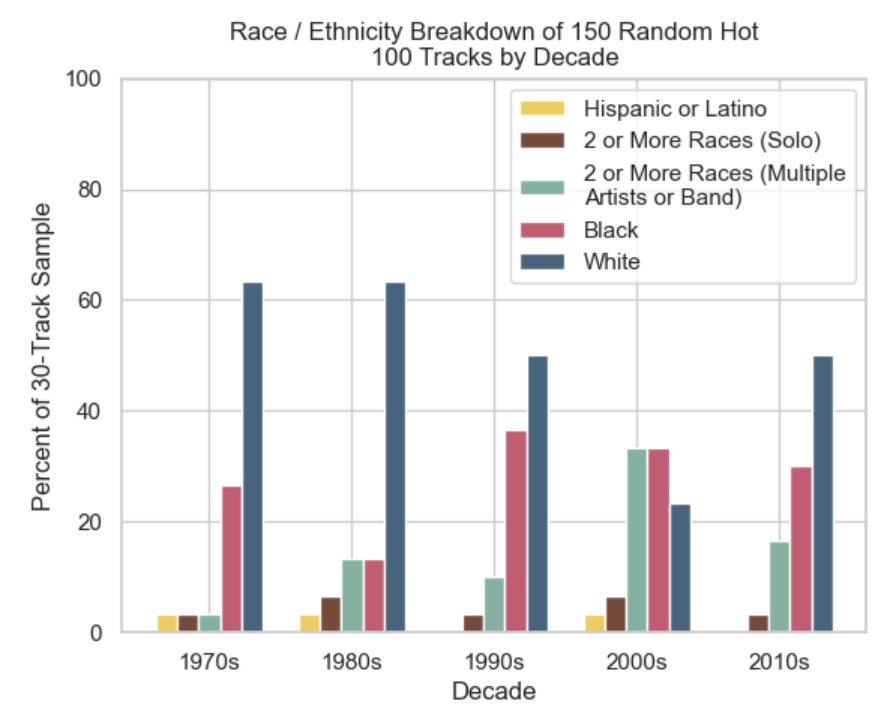
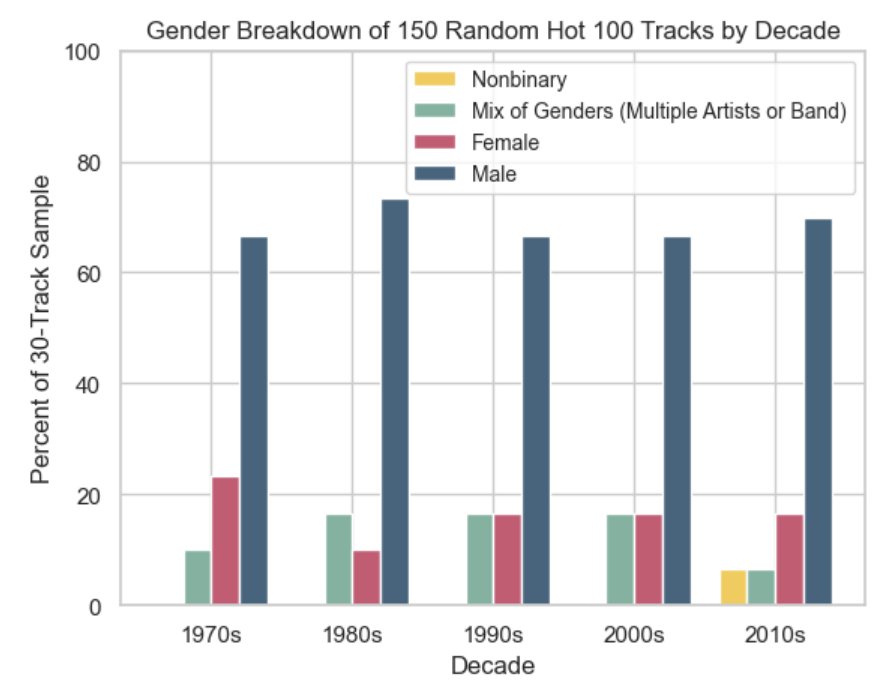
Gender
Women and other marginalized genders have struggled for acceptance in many industries, and music is no exception. Throughout the history of the Hot 100, men have dominated the spotlight. While there have been some successes, such as a growing acceptance and spotlight for nonbinary artists seen in the random sample of Hot 100 tracks, there is still a long way to go. It's not just on stage that men control the music industry. A ten-year study from 2012-2021 saw women making up a disproportionately low percentage of credited artists, as well as being underrepresented in songwriting and producing; Women of Color are even less represented than their White counterparts (Hernandez et al. 2022). While some facets of musical diversity are improving, there is still a long ways to go in terms of gender parity.
Collaboration
Recent decades have benefitted from new communication technologies, and so the Hot 100 has seen a growing focus on collaborative tracks. Collaborative tracks are most frequently denoted by a "featuring" or "feat." when naming their credited artists. The percentage of collaborative tracks on the Hot 100 has steadily grown over the past few decades, which encourages novel ideas and diverse expression in popular music as artists from different backgrounds put their own experiences into the songs.
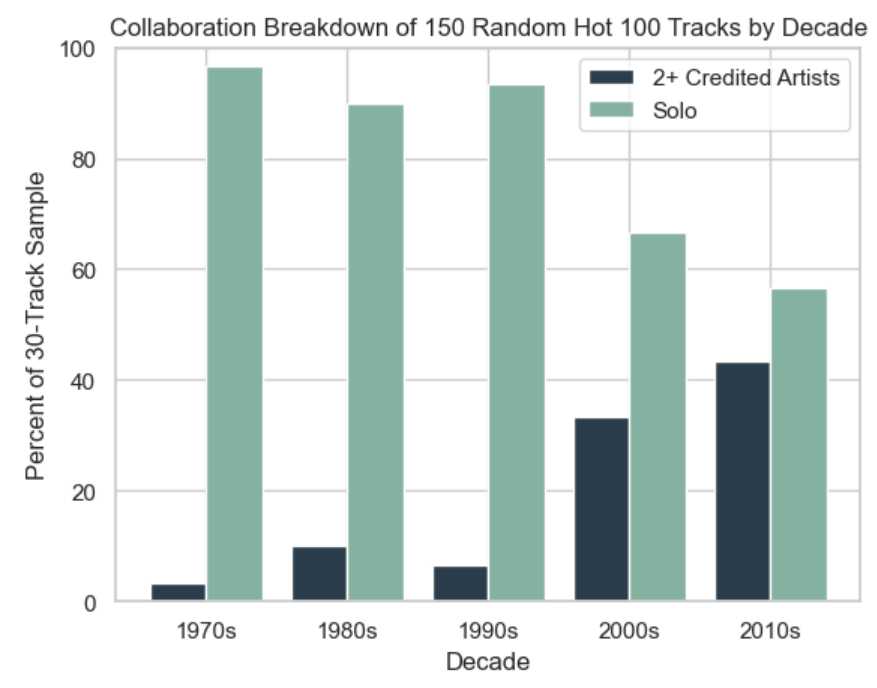
As a society, we're becoming more open and expressive through our popular music! We value more diverse contributions and collaboration and express more varied emotions and sentiments.
Thinking About Music
Over the years, American popular music has seen a large increase in the variety of moods expressed, how that music sounds to the listener, and who was involved in making it. These past few decades have shown increased diversity and collaboration in the music industry, and this allows for even greater types of values and ideas to be expressed. What counts as "socially acceptable" to hear has gained a looser definition, allowing for more potentially mature or strong feelings to be communicated. Music is art after all, and art isn't always representative of positive things in life because, quite frankly, life can be difficult sometimes. It is my hope that American popular culture continues to value music as a form of expression, and rallies behind increased collaboration and diversity in music, especially in terms of underrepresented genders and races in the industry. Try listening to new artists and genres; there are often brand new worlds to explore.
